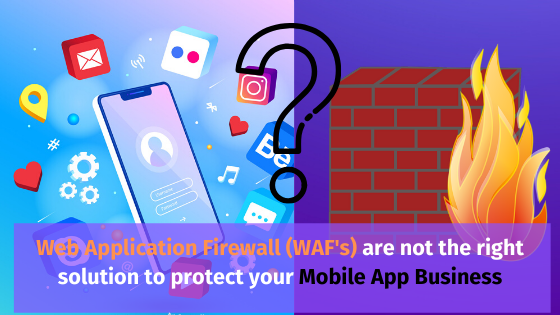
Few options are available to developers to defend their applications when they discover critical bugs in a production environment. The situation is exacerbated by the fact that DevOps is ruling the roost, and more often than not, there are multiple interfaces through which an application is accessible to the public. Rather than only relying on traditional perimeter solutions, like Web Application Firewall (WAF), it becomes vital to adopt comprehensive, swift remedial measures to prevent any untoward loss to customer trust and ensure that data is kept intact.
WAF Challenges and Limitations
Though it is fine for companies to initiate a nascent security strategy with WAF deployment, it will not be enough to provide an end-to-end security architecture. WAFs fall was critically short in protecting applications against a multitude of AppSec risks. Some of the challenges that firms typically face with implementing WAFs are enumerated below:
- Enough contextualization data is often missing from WAF alerts and hence it becomes a long-drawn-out task for the development team to figure out the source of threat vectors. The necessary patches and final deployment resultantly get delayed. Though WAF can protect against known vulnerabilities, it cannot ensure dynamic protection against emergent threats posed by attackers.
- The biggest drawback of WAFs arises from their very nature and their non-dependability on application’s loopholes and vulnerabilities. This makes it seem innocuous to believe the WAF alerts, among which many can be false positives/negatives too. This makes them least dependable, especially in the case of business-critical AppSec requirements.
- As noted earlier, agile development teams have moved away from the traditional SDLC models. Regular code deployment is antithetical to the limitations posed by the very nature of WAFs. Major security breaches can put at risk the revenue model, causing irreparable damage to the firm’s viability.
- Though WAFs have served as a critical line of defense against illegitimate snoopers, they have failed to cater effectively to a large basket of complex threat vectors. WAF is essentially predictive in nature, scanning all individual packets over the network for known threats using pattern recognition reinforced using predefined rules. Though they can be configured to match security requirements of an application, this flexibility often falls short of providing necessary security comfort to developers, who have to be diligent enough to deal with the growing battery of security attack vectors.
- Often WAF requires maintenance and regular updates, hence it is not a configure-and-forget affair. Though many WAFs come with virtual patching to rectify the application as soon as defects are recognized, it is still not foolproof and can turn up many false positives/negatives, causing unnecessary hassles, and worse enough never detects a potentially disastrous bug.
- WAFs behave unexpectedly on many occasions, as illustrated by their fail open-fail close cases when there is too much traffic. In the former, WAF passes through all the traffic through it without applying any filtering whatsoever, whereas, in the fail-close state, WAF blocks all web traffic for the application blindly. These mechanisms can bypass the rules through an intelligent DDoS attack by faking the actual source from where the request is coming from.
- With the adoption of the latest technological trends by development teams and a demanding clientele, you end up with applications having daily releases. Expecting WAF to stand up to such dynamic challenges is expecting too much. A proactive, intertwined security strategy is the need of the hour instead. Applications are increasingly getting deployed on the cloud rather than being pushed on physical servers. WAF often lacks up/down-scaling with the application appropriately. Then there are performance issues – latency abound and parallel processing is deeply impacted.
The Misunderstood Role
An inclusive AppSec solution should ideally protect data security, prevent malware infections, check inadvertent intrusions, and effectively handle service disruptions. WAFs were built to monitor the application perimeter, and not protect the application itself. This clarity in usage terms of WAFs is often missing, causing companies to over-depend on WAF for services which it is not equipped to provide. WAF adaptation has hit a dead end with applications getting hosted on the cloud. An intelligent approach should be put in place to give weighted importance to both AppSec initiatives and perimeter solutions, understanding each one’s role and contribution.
Leverage AppSealing’s RASP Power
AppSealing provides a comprehensive, end-to-end solution to all your AppSec worries! Get your application protected within minutes, without impacting the codebase whatsoever. Its Runtime Application Self-Protection (RASP) feature protects your app’s integrity against runtime threats, debugging, and decompiling, something a WAF cannot do. Protect your applications against looming threats today and make them future-proof!